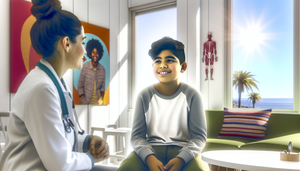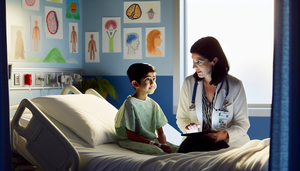
Machine Learning vs Deep Learning: Key Differences and Applications in Digital Clinical Practice
Discover how machine learning and deep learning are transforming diagnostic accuracy in modern medicine.
Read more
Fundamentals of Artificial Intelligence in Medicine: Key Insights for the Doctor of the Future
Discover how artificial intelligence is revolutionizing medicine and shaping the doctor of the future.
Read more
Neuroendocrine Tumors: Prognostic Factors and Life Expectancy in Neuroendocrine Carcinoma Survival
Explore how prognostic factors enhance the survival and treatment of neuroendocrine tumors.
Read more
Merkel Cell Carcinoma: Prognosis, Survival, and Key Factors in This Rare Skin Cancer
Merkel cell carcinoma is aggressive, but comprehensive treatment significantly improves survival.
Read more
Liposarcoma: Prognosis, Survival, and Key Factors in Fat Tissue Tumors
Explore how histological subtypes and the location of liposarcoma impact prognosis and survival.
Read more
Rhabdomyosarcoma: Prognosis and Prognostic Factors Influencing Survival in Pediatric Soft Tissue Sarcomas
Explore how genetic factors and emerging treatments influence rhabdomyosarcoma survival.
Read more
Leiomyosarcoma: Prognostic Factors and Life Expectancy in Soft Tissue Sarcomas
Discover how new therapeutic combinations and genomic models enhance the prognosis of leiomyosarcoma.
Read more
Ewing Sarcoma: Prognosis, Survival, and Life Expectancy in Childhood Bone Tumors
Explore how multidisciplinary therapy enhances survival in pediatric Ewing sarcoma.
Read more
Chondrosarcoma Prognosis: Survival Factors and Life Expectancy in Cartilage Tumors
The management of chondrosarcoma depends on the tumor grade and the presence of metastasis.
Read more
Osteosarcoma: Prognosis, Life Expectancy, and Survival Factors in Orthopedic-Oncological Management
Explore how novel biomarkers and targeted therapies can enhance survival in osteosarcoma.
Read more
Pituitary Cancer: Prognosis, Survival Rates, and Key Factors for Pituitary Tumors
Discover how treatment at specialized centers enhances survival in complex pituitary tumors.
Read more
Adrenal Cancer: Prognosis, Life Expectancy, and Key Prognostic Factors for Adrenal Tumors
Discover how new biomarkers enhance prognosis and survival in adrenal cancer.
Read more
Parathyroid Cancer: Prognosis, Life Expectancy, and Endocrine Survival Factors
Explore how surgery and biomarkers enhance survival in parathyroid cancer.
Read more
Thyroid Cancer Prognosis and Life Expectancy Based on Histological Subtype: Key Factors for Survival
Discover how the histological subtype of thyroid cancer influences prognosis and survival.
Read more
Ependymoma: Prognostic Factors and Survival Outcomes in CNS Tumors
Molecular subclassification of ependymoma enhances survival prediction and treatment personalization.
Read more
Medulloblastoma: Prognosis, Survival, and Life Expectancy in Childhood Brain Tumors
Discover how molecular classification of medulloblastoma enhances prognosis and survival in pediatric patients.
Read more
Astrocytoma: Prognostic Factors and Life Expectancy in Glial Tumors Survival
Discover how genetic mutations and tumor grade impact the survival of astrocytomas.
Read more
Meningioma Prognosis and Life Expectancy: Key Prognostic Factors for Neurosurgeons
Total resection and molecular characterization improve prognosis and survival in meningiomas.
Read more
Glioblastoma: Prognosis, Life Expectancy, and Survival Factors in Aggressive Brain Cancer
Explore how MGMT promoter methylation and surgical resection enhance survival in glioblastoma.
Read more
Multiple Myeloma: Prognosis and Life Expectancy Based on Clinical Prognostic Factors
Explore how advancements in treatment and diagnosis are improving prognosis and life expectancy in multiple myeloma.
Read more